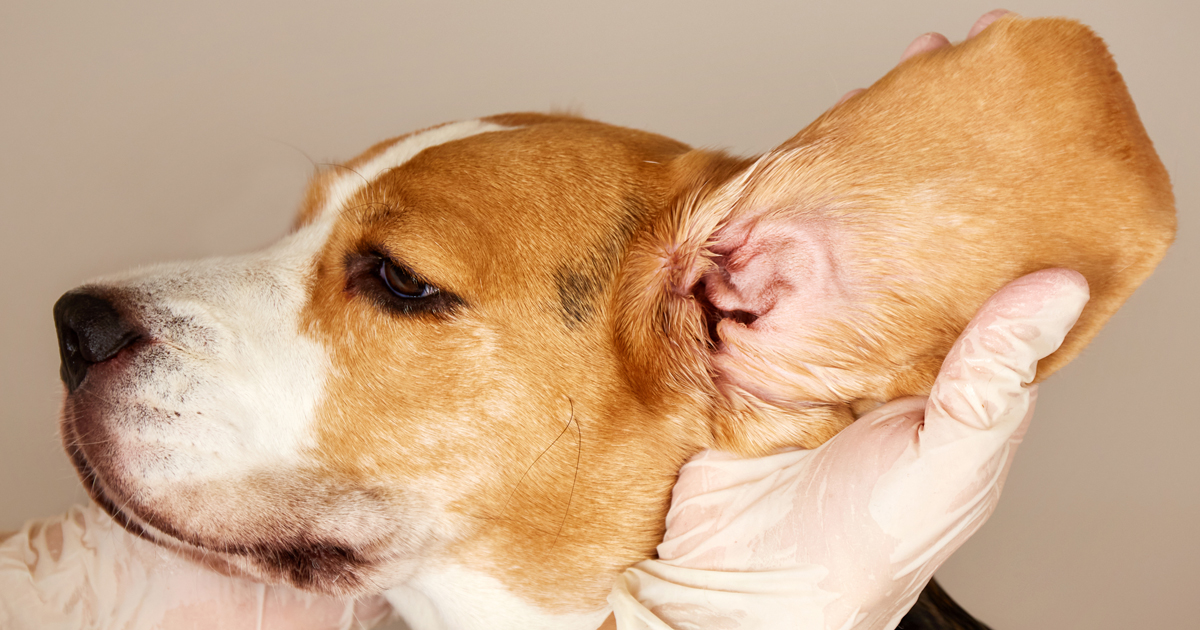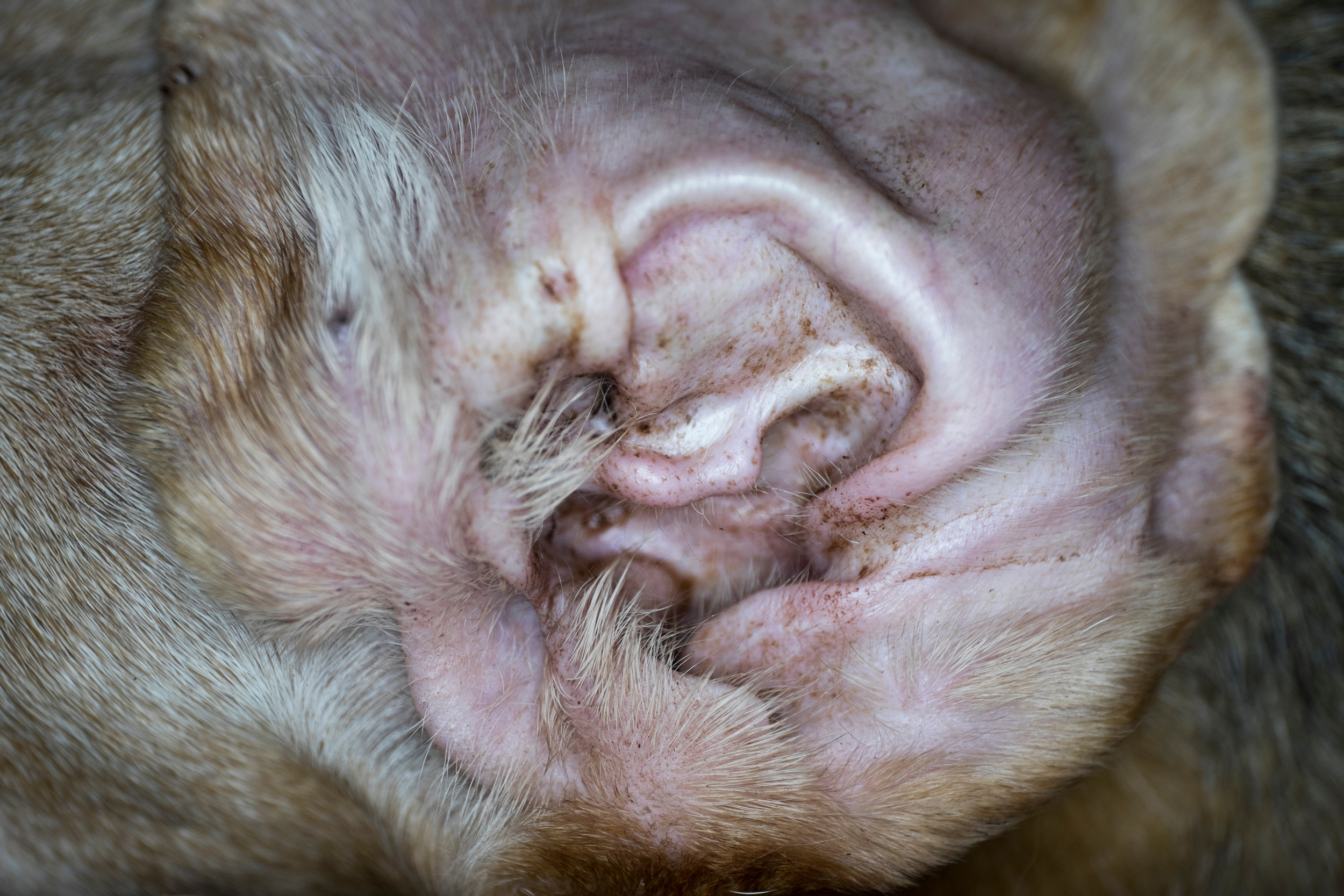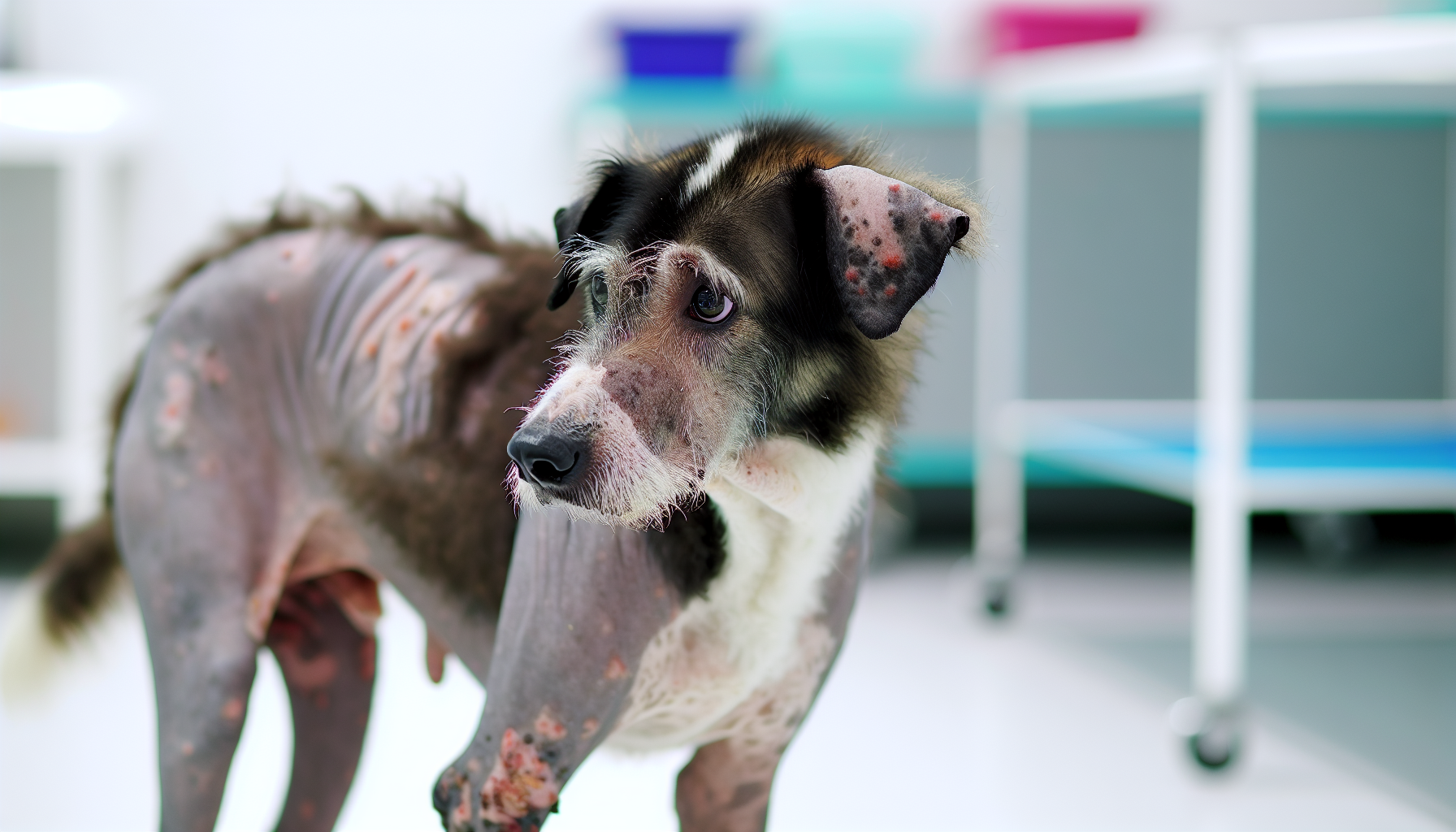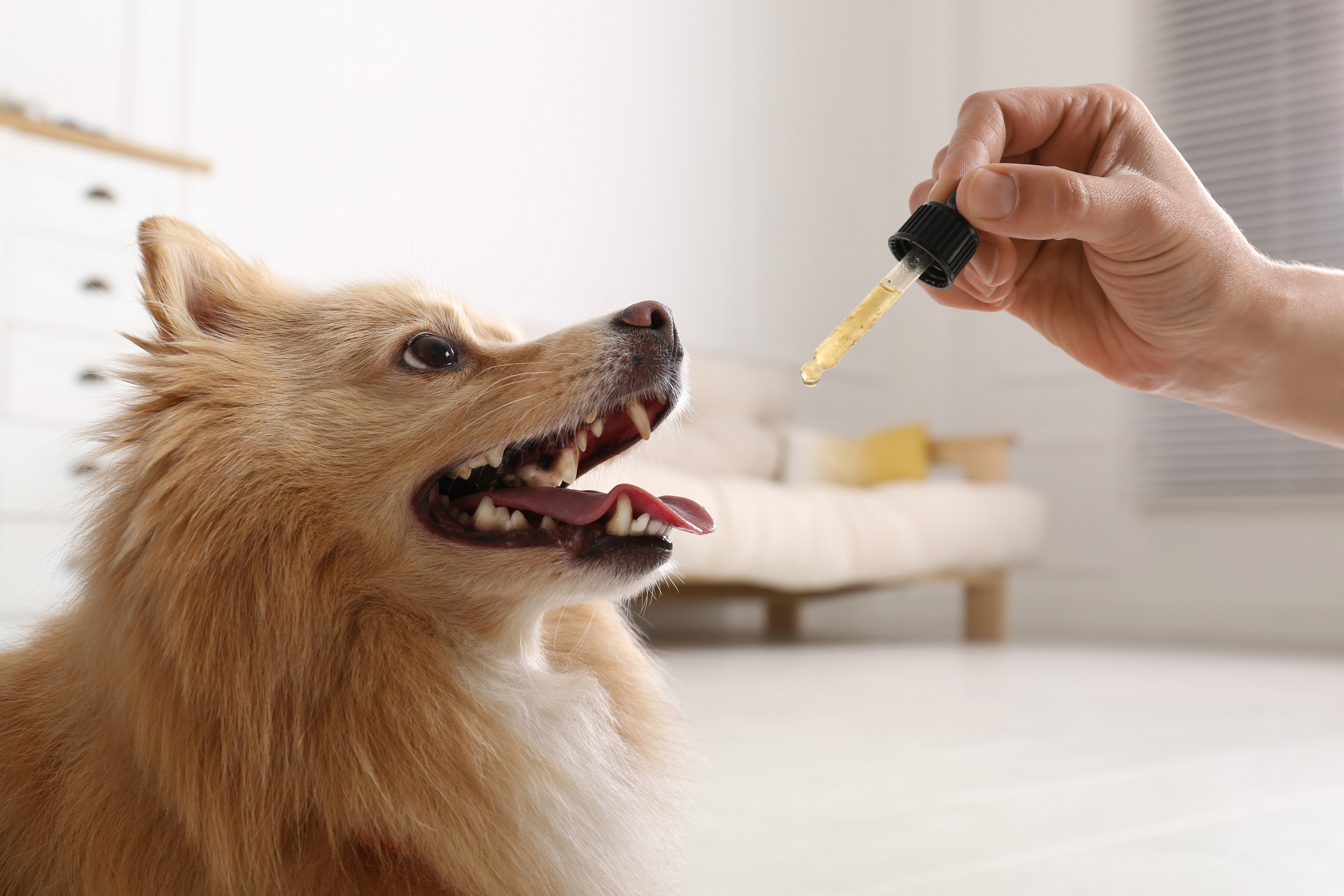Introduction
Dive into our detailed guide and explore the essential steps on how to safeguard your dogs against mites. Learn through our expert advice and strategies to help pet owners identify, prevent, and manage mite infestations effectively.
Scratching, hair loss, and skin irritation are telltale signs your dog might be suffering from a mite infestation, commonly known as “mites on dogs.” Understanding the types of mites that can affect your dog and how to combat them is crucial. Let’s explore the context of mites on dogs and discuss how to recognise and treat dog mites and infestations and effective prevention strategies for your dog’s health and comfort.
Key Takeaways
- Canines can acquire dog mites through direct contact with infested animals or environments. Certain types of dog mites, like Demodex canis, can live in your dog’s hair follicles, while others, like Cheyletiella, cause ‘walking dandruff.’
- Symptoms of dog mite infestation include excessive scratching, hair loss, inflammation or reddening of the skin, and, in the case of ear mites, a dark waxy ear discharge with an unpleasant strong odour.
- Treatment options to get rid of dog mites range from topical medications and oral drugs, which have associated side effects, to natural home remedies like olive oil; preventing dog mites involves regular cleaning, preventative medicine, and maintaining a robust immune system.
What Are Dog Mites?

It’s surprising to learn that mites, microscopic parasites belonging to the class Arachnida (spiders, scorpions, ticks, and mites), are globally distributed and known to infest various mammalian hosts, including our dogs. The primary mites causing skin diseases in dogs are:
- Sarcoptes scabiei
- Otodectes cynotis
- Demodex canis
- Cheyletiella spp.
To the naked eye, dog mites appear as tiny white dots. Their life cycles can vary from 17 to 35 days, progressing through stages such as egg, larva, nymph, and adult.
Interestingly, Demodex canis mites, also known as follicle mites, dwell within dogs’ hair follicles and sebaceous glands. These mites cause issues only when their numbers increase significantly. Typically, they reside deep within the skin and are not often spread between dogs or humans. The primary mode of transmission occurs during early puppyhood, when female dogs nurse their pups, passing the mites to their offspring.
Understanding the lifecycle and behaviour of these mites is crucial. While they are generally harmless in small numbers, an overpopulation can lead to skin problems and discomfort for your pet. This transfer of mites from mother to puppies highlights the importance of early care and monitoring of young dogs to prevent potential infestations.
On the other hand, Cheyletiella spp., responsible for the condition known as walking dandruff, completes its entire life cycle on the host, leading to a dandruff-like appearance. Identifying a dog mite invasion in our dogs requires recognising certain signs and symptoms. Let’s uncover these indicators.
Signs and Symptoms of Mites on Dogs

Dogs with dog mite infestations often exhibit the following symptoms:
- Excessive scratching, indicating irritation
- Hair loss
- Redness or inflammation of the skin
- Sores or scabs
- Itching or discomfort
- Ear infections or discharge
- Thickened or crusty skin
- Bad odour
Symptoms can vary depending on the type of mite infestation. If you notice any of these signs in your dog, seeking professional help to diagnose and treat the infestation is essential.
We will now detail the signs and symptoms unique to dog ear mites and skin mites, focusing on the ear canal area, particularly during an dog mite infestation.
Ear Mites

Ear mites in dogs, caused by Otodectes cynotis, are a common nuisance. These dog tiny mites live on the skin’s surface in the dog’s ear canal, leading to conditions like otitis externa in affected dogs. So, what are the telltale signs of ear infestations? Dogs with mites typically exhibit skin irritations around their ears, head, and neck, which leads them to scratch these areas excessively and engage in head shaking.
However, the most notable symptom of dog mites is severe irritation, resulting in a dark, waxy discharge that resembles coffee grounds and emits an unpleasant odour from the dog’s ears. So, if your dog is shaking its head or scratching its ears more than usual, and you notice a dark discharge from its ears, it’s high time to visit the vet for an dog mite check and to rule out an ear infection.
Next, we will examine skin mites.
Skin Mites

Sarcoptes scabies var canis causes a condition known as sarcoptic mange or scabies. This infestation manifests with intense itching, loss of hair, and inflammation. These mites burrow tunnels in the skin, leading to secondary infections.
Sarcoptic mites spend their life cycle buried in the outer layer of your dog’s skin. This burrowing causes your dog to experience intense itching, which can result in painful wounds from scratching. The mites are highly contagious and can easily be passed between dogs, as well as between dogs and humans. Understanding the full impact of sarcoptic mange is crucial; as it goes beyond just the physical discomfort, it causes your pet.
1. What are alternative names for sarcoptic mange?
Sarcoptic mange is also known as scabies.
2. How is sarcoptic mange transmitted?
Sarcoptic mange can be transmitted easily between dogs and also from dogs to humans.
3. What are the symptoms of an infestation?
Symptoms include intense itching, skin inflammation, and painful wounds resulting from scratching.
4. Where do sarcoptic mites live on the host?
Sarcoptic mites live buried in the outer layer of a dog’s skin.
Other skin mites, like those causing cheyletiellosis, lead to skin scaling, particularly along the dog’s back. Localized or generalized demodicosis can present with hairless, red, scaly skin patches, often resembling acne. Canine scabies can also cause small, solid bumps and thick, crusted sores from persistent scratching.
Additional Health Conditions Caused by Dog Mites
- Sarcoptic Mange (Scabies): This type of mange is highly contagious and causes severe itching and redness.
- Demodectic Mange: Also known simply as demodicosis, this condition can be localized or generalized, characterized by bald spots and secondary infections.
- Cheyletiellosis: Often referred to as “walking dandruff,” this condition causes large, scaly skin flakes.
- Trombiculosis (Harvest Mite Infestation): These mites are often found in grassy areas, leading to intense itching and discomfort.
- Ear Mites: These mites live in the ear canals and can cause severe discomfort and potential ear infections if left untreated.
Identifying and treating mite infestations early is crucial to prevent severe discomfort and secondary infections in your pet. Regular check-ups and maintaining a clean environment can also help manage and prevent these conditions.
Symptoms to Watch For
- Intense itching and scratching
- Visible skin flakes
- Hair loss
- Red, inflamed skin
- Dark discharge or foul odour from ears
If your dog is showing any of these symptoms, it’s time to seek professional help to diagnose and address the mite infestation.
This naturally leads us to question the origin of these mites.
How Dogs Get Mites
Dogs typically acquire mites through direct contact with another infested animal or contaminated environments, such as infested bedding or surfaces. Canine scabies mites can also be transmitted indirectly through infested items, suggesting the importance of environmental cleaning. Some mites, like Cheyletiella, can survive up to 10 days in the environment, necessitating treatment of a pet’s living area to prevent re-infestation.
Older dogs and those with compromised or weakened immune systems are at greater risk of developing an infestation of mites. Therefore, minimising exposure to infested animals or environments and maintaining their immune health is paramount. But how can we be sure if our dogs have mites? The answer lies in proper diagnosis.

Diagnosing Mites in Dogs
Diagnosing mites in dogs involves specialised techniques. Common mites such as Sarcoptes, Demodex, and Cheyletiella are diagnosed through skin scraping techniques, with mineral oil used to collect and examine the debris under a microscope. While Demodex mites, which inhabit hair follicles, require deep skin scrapings, Sarcoptes mites, found less abundantly, necessitate multiple superficial scrapings due to frequent false negatives.
Cheyletiella mites, residing on the skin surface, can be identified using wide superficial scrapings or clear acetate tape pressed onto scaly areas for microscopic examination. On the other hand, an otoscope is used to examine the ears and microscope analysis of ear discharge samples is performed to diagnose mites.
Initiating the appropriate treatment relies heavily on an accurate diagnosis. What treatment options, then, are available?
Treatment Options To Get Rid of Mites on Dogs
Various conventional treatment options are available for mites on dogs, ranging from topical anti-parasitic medications and injectable or oral pesticides such as Bravecto to natural home remedies. The choice of treatment depends on the severity of the infestation, the dog’s health status, and the owner’s preference.
Side Effects of Conventional Ear Mite Treatments
Conventional oral pesticides, injectables and topical treatments for mites can pose risks for your dog. Most of these drugs work by paralysing the parasite. Neurotoxins can be harmful to your dog and are best avoided. It’s important to be aware of the potential risks and take precautions to keep your pet safe. Side effects can include:
- Tremors
- Seizures
- Ataxia (incoordination)
- Vomiting or diarrhoea
- Loss of appetite
- Skin irritations
- Lethargy
Considering these potential side effects and the three-week life cycle of mites, which implies conventional medications only eliminate adult mites and not the eggs, exploring safer and gentler treatment options becomes imperative. This brings us to natural home remedies for treating ear mites in dogs.
3 Natural Home Remedies for Treating Mites on Dogs Include:

At home natural solutions offer a gentler and safer way to get rid of mites in dogs.
1. Olive Oil
- Using a cotton wool ball, gently clean the ear with olive oil
- Remove as much debris and ear wax as possible
- Olive oil helps suffocate and get rid of dog mites
- Repeat treatment every 3 days for 2 weeks
Dog mites hatch every 4 days, so this olive oil protocol will prevent them from proliferating while eliminating them.
Bonus: To speed up your dogs’ treatment and recovery add 1-3 drops of essential oil per 30ml of olive oil (select ONE essential oil only based on your dogs requirement)
- Peppermint (natural anaesthetic)
- Catnip (helps control mites)
- St John’s Wort (relieves pain)
- Calendula (heals the ear skin)
2. Garlic Oil
Herbal practitioners often endorse the use of garlic oil due to its natural sulfur content, which is a natural mite repellant, making it an effective anti-parasitic agent. Additionally, garlic’s recognised antibacterial and anti-fungal properties make it beneficial in treating any secondary infections.
- Mince two garlic cloves and immerse them in a cup of olive oil.
- Allow this mixture to infuse overnight.
- The following day, strain out the garlic cloves and transfer the infused oil into a glass jar for storage.
- Using a dropper administer garlic oil to your dog’s affected ear(s), applying it twice a day for optimal results.
3. Green Tea
Green tea, a natural antiseptic, can eliminate all lifestages of dog mites and remove brown wax discharge.
- Place a tea bag or measure a tablespoon of loose green tea into a cup of boiling water.
- Allow it to steep for several minutes before straining.
- Allow the tea to cool to room temperature.
- Use a dropper to add 3-4 drops of the tea into each affected ear.
- Following the application, softly massage the base of your dog’s ears. Next, moisten a cotton ball with the tea and gently clean the interior ear wax from each ear.
- Repeat this process daily for a duration of 4 weeks.
These effective home treatments can assist us in providing natural relief from dog mites to our furry friends. However, wouldn’t prevention of the infestation be a better approach?
Preventing an Infestation of Dog Mites
Prevention is always better than cure, which is true for dogs’ parasite infestations. Dogs catch mites easily, so cleaning your dog’s ears regularly with a damp cloth can help prevent mites, but avoid over-cleaning to maintain a balance of healthy ear bacteria.
Maintaining a strong immune system in dogs is fundamental to ward off parasites, including dog mites, naturally:
- Provide your dog with the finest diet of whole foods, opting for raw or lightly cooked that is within your budget.
- Don’t over-vaccinate.
- Avoid antibiotics, pharmaceutical drugs, and pesticides.
- Minimize the presence of chemicals in your dog’s environment.
- Refrain from using chemical-based lawn treatments and fertilizers.
Additionally, to prevent dog mites more directly:
- Limit Contact: Ensure your dog doesn’t come into contact with unfamiliar dogs who might have mites. This can be tricky, but vigilance is key.
- Post-Treatment Hygiene: If your dog has been treated for mites, wash their bedding and clean their surroundings thoroughly to prevent re-infestation.
- Isolation: If your dog has mites, keep it away from other dogs until it has been treated to stop the spread.
Keeping dogs away from outdoor or feral cats can also reduce the risk of ear mite exposure. Despite our best efforts, some misconceptions about mites on dogs can lead to confusion.
Combining these lifestyle practices with specific preventive measures can significantly reduce the risk of your dog suffering from mites.
Mites on Dogs: Myths and Misconceptions
One common misconception is that humans can contract the same type of full-blown scabies from dogs as they do from other humans. When humans get mites from dogs, the condition is usually self-limiting and does not result in the deep burrows seen in typical human scabies. Another myth is that ear mites, a specific type of mite infestation in dogs, generally affect humans. However, these types of dog mites rarely infest humans.
Mites typically only prefer one species; however, some can also infect humans if they come within close contact with them. The most common dog mites that can affect humans are sarcoptic dog mites. These are highly contagious and can cause itchiness and inflammation.
For dog owners, consulting both veterinarians and doctors is vital to comprehend how to evade contracting mange from pets and control mite infestations in the household. By understanding the specific types of mites that can transfer from dogs to humans and their symptoms, you can better protect yourself and your furry friends.
What happens, though, if you have multiple pets in your household?
Mite Infestations in Multi-Pet Households
Managing an infestation of mites in multi-pet households can be a challenge. When one pet in the household is diagnosed with mites, it is crucial to treat all pets to prevent them from reinfecting each other and to achieve complete eradication.
To prevent the transmission of mites between pets, it is essential to:
- Avoid contact with infected animals
- Quarantine affected pets until fully treated
- Treat all animals in close contact, including dogs, cats, and other domestic animals
Mite infestations, including mange, are highly contagious among pets, so taking these precautions is crucial. Let’s now summarise our learnings.
Summary
Dealing with mites in dogs can be a daunting task, but armed with accurate information, we can effectively diagnose, treat, and prevent these infestations. We’ve learned about the different types of mites, their life cycles, and the diseases they cause. We’ve also delved into the signs and symptoms of infestations and how to diagnose and treat mites using conventional medications and natural remedies at home.
Prevention is key to keeping our dogs mite-free. Regular ear cleaning, maintaining a strong immune function, and limiting contact with outdoor or feral cats can help prevent parasite infestations.
In wrapping up our comprehensive exploration of dog mites, it’s evident that prevention and early intervention are paramount. Integrating NutriFlex DigestiMax and FloraMax prebiotics and probiotics into your dog’s diet can significantly contribute to these efforts. These supplements not only support digestive health and nutrient absorption but also strengthen your dog’s immune system, forming a critical line of defence against mite infestations. A robust immune system can deter mite proliferation by making your dog less hospitable to these opportunistic parasites.
Debunking common myths and misconceptions about mites can help us better understand and manage these infestations. Remember, our pet’s rely on us for their health and well-being, so let’s do all we can to keep your furry friend safe and happy.
Frequently Asked Questions
How do I know if my dog has mites?
If your dog has mites, you may notice intense itching, sudden hair loss, dandruff, and visible irritation such as red skin. Keep an eye out for these symptoms.
What is Cheyletiellosis?
Cheyletiellosis, often referred to as “walking dandruff,” is a skin condition caused by infestation with Cheyletiella mites. These mites are large enough to be seen by the naked eye and derive their nickname from the initial appearance of dandruff-like flakes moving on the skin of affected animals.
Symptoms and Signs
- Dandruff Appearance: The most noticeable symptom is the presence of white flakes on your pet’s coat, which resemble dandruff.
- Mild Itching: Unlike other mite infestations, cheyletiellosis may not cause severe itching unless your pet develops a hypersensitivity to the mites.
- Spread: This condition is highly contagious and can easily spread between dogs, other animals, and even humans.
Diagnosis and Treatment
Veterinarians usually diagnose cheyletiellosis through skin scrapings, examining the fur, or using adhesive tape to capture mites for microscopic examination. Treatments typically involve:
- Topical Medications: Mite-killing shampoos or spot-on treatments.
- Oral Medications: In some cases, oral parasiticides may be prescribed.
- Environmental Cleaning: Thorough cleaning of the pet’s living area to prevent re-infestation.
Prevention
Regular grooming and routine veterinary check-ups can help catch infestations early and reduce the risk of spreading mites to other pets and humans.
By understanding cheyletiellosis, pet owners can proactively ensure their furry friends remain healthy and comfortable.
What Are Harvest Mites?
Harvest mites, also known as chiggers or Trombiculidae, are tiny arachnids that typically inhabit grassy fields and wooded areas. These mites are prevalent during the late summer and early autumn months. Both pets and humans can become hosts to these pests, often acquiring them during outdoor activities in rural environments.
Key Facts About Harvest Mites:
- Size and Appearance: Harvest mites are minuscule, making them difficult to spot with the naked eye. Their larvae are usually red or orange.
- Affecting Various Species: While dogs are commonly affected, cats and humans can also be targets for these mites.
- Symptoms in Hosts:
- Persistent itching and scratching
- Small, red bumps on the skin
- Inflammation and discomfort
Common Time Frame: These mites are most active in the late summer months, making this the peak period for potential exposure. Understanding where and when these mites are most active helps take preventive measures.
How do you get rid of mites on a dog?
You can eliminate mites on a dog by using medicated shampoos or dips and potentially prescription medications if needed. It’s important to also monitor the mite population with regular skin scrapings.
Can humans get mites from dogs?
Yes, humans can get mites from dogs if they come in contact with an infected dog. Be cautious when handling dogs with mange.
Does flea treatment kill mites?
Exploring safer, more gentle, and potentially more effective solutions through natural alternatives for eliminating dog mites is advisable. While flea treatments are frequently prescribed, their success in addressing an infestation of dog mites is not guaranteed. Embracing natural home remedies offers a less invasive approach that can effectively eliminate dog mites without potential side effects associated with conventional medications and pesticides.
How do dogs get mites?
Dogs get mites through direct contact with infested animals or contaminated environments, like infested bedding or surfaces. Be mindful of these situations to prevent future infestations of dog mites.